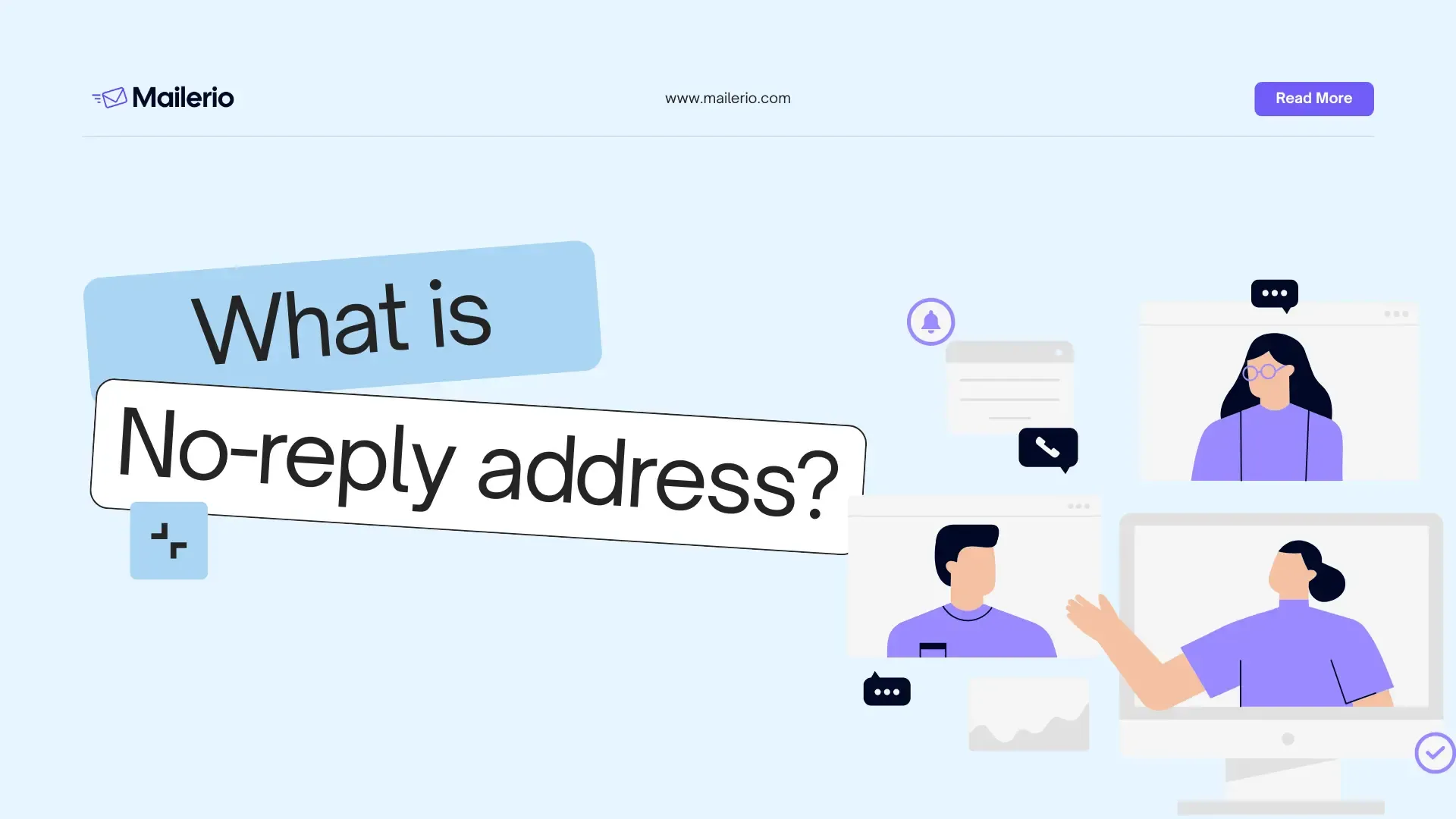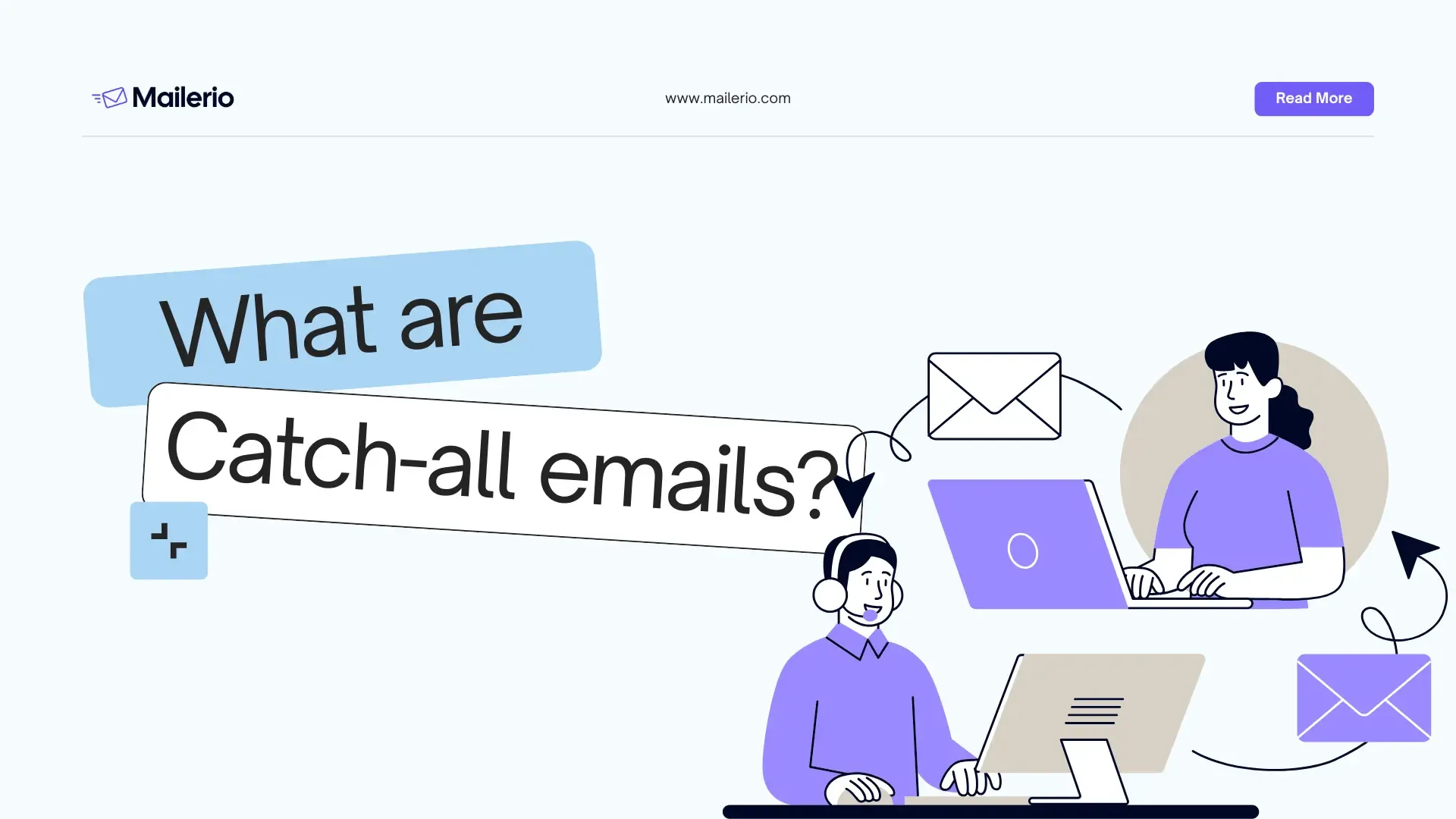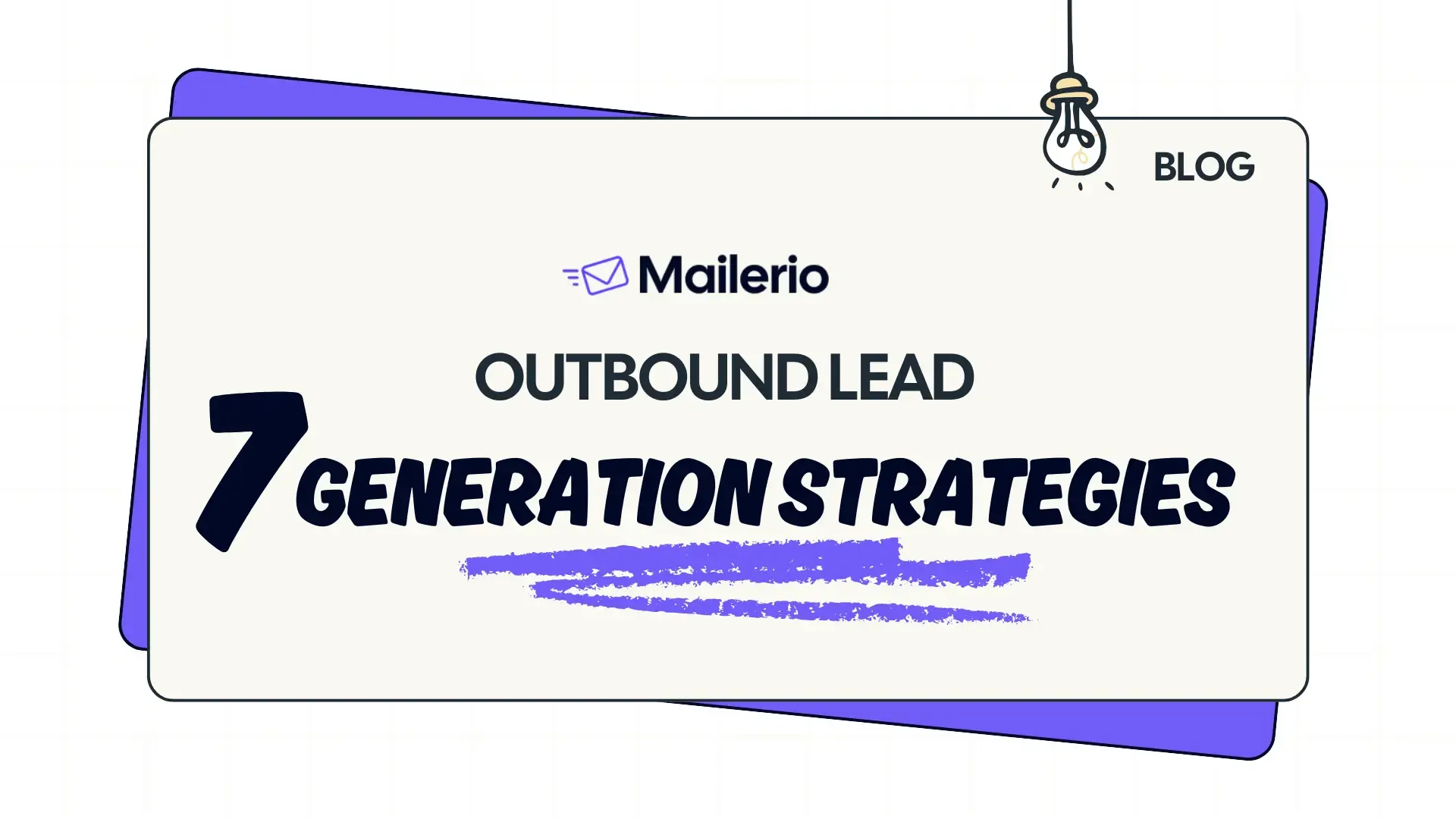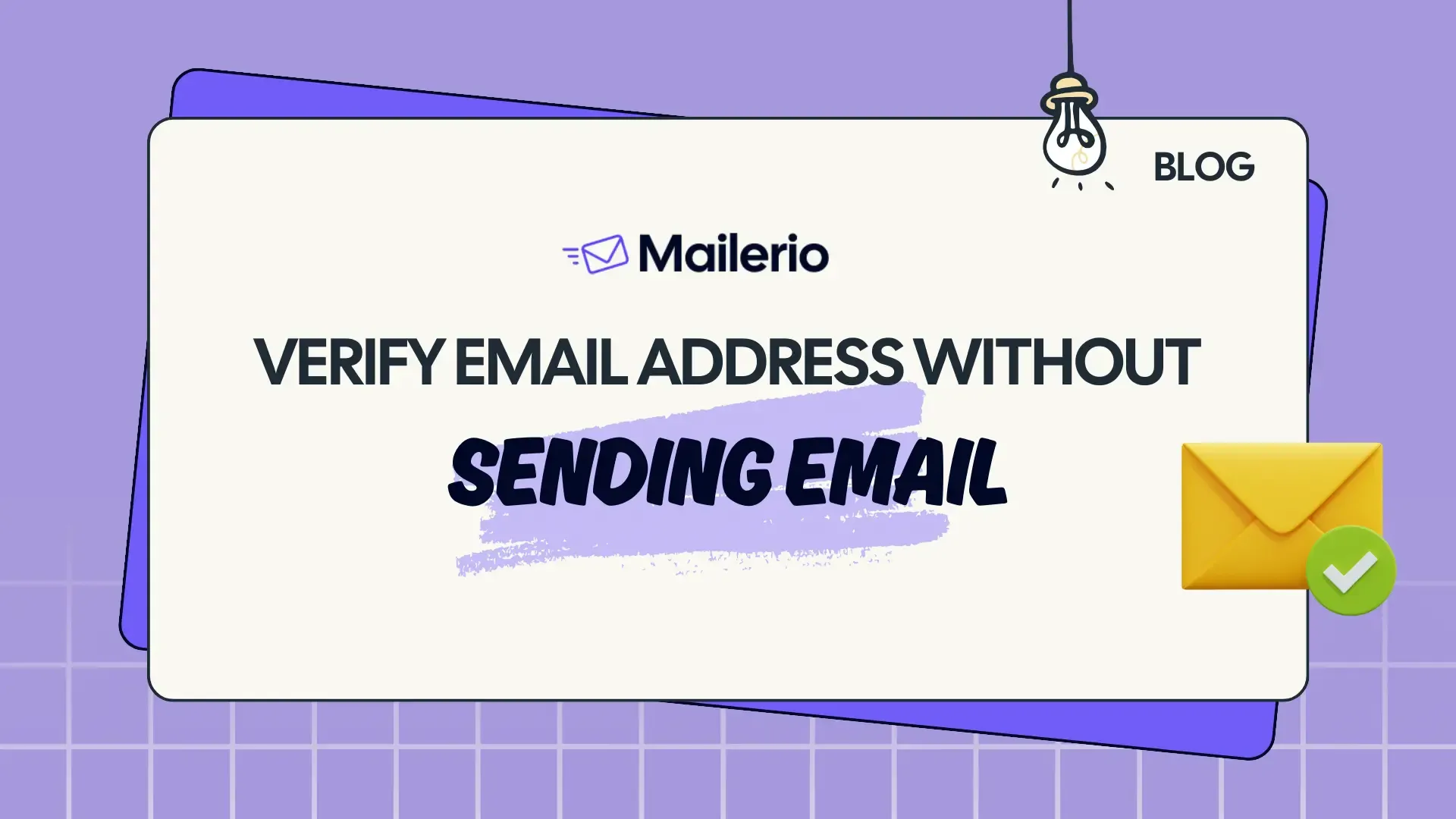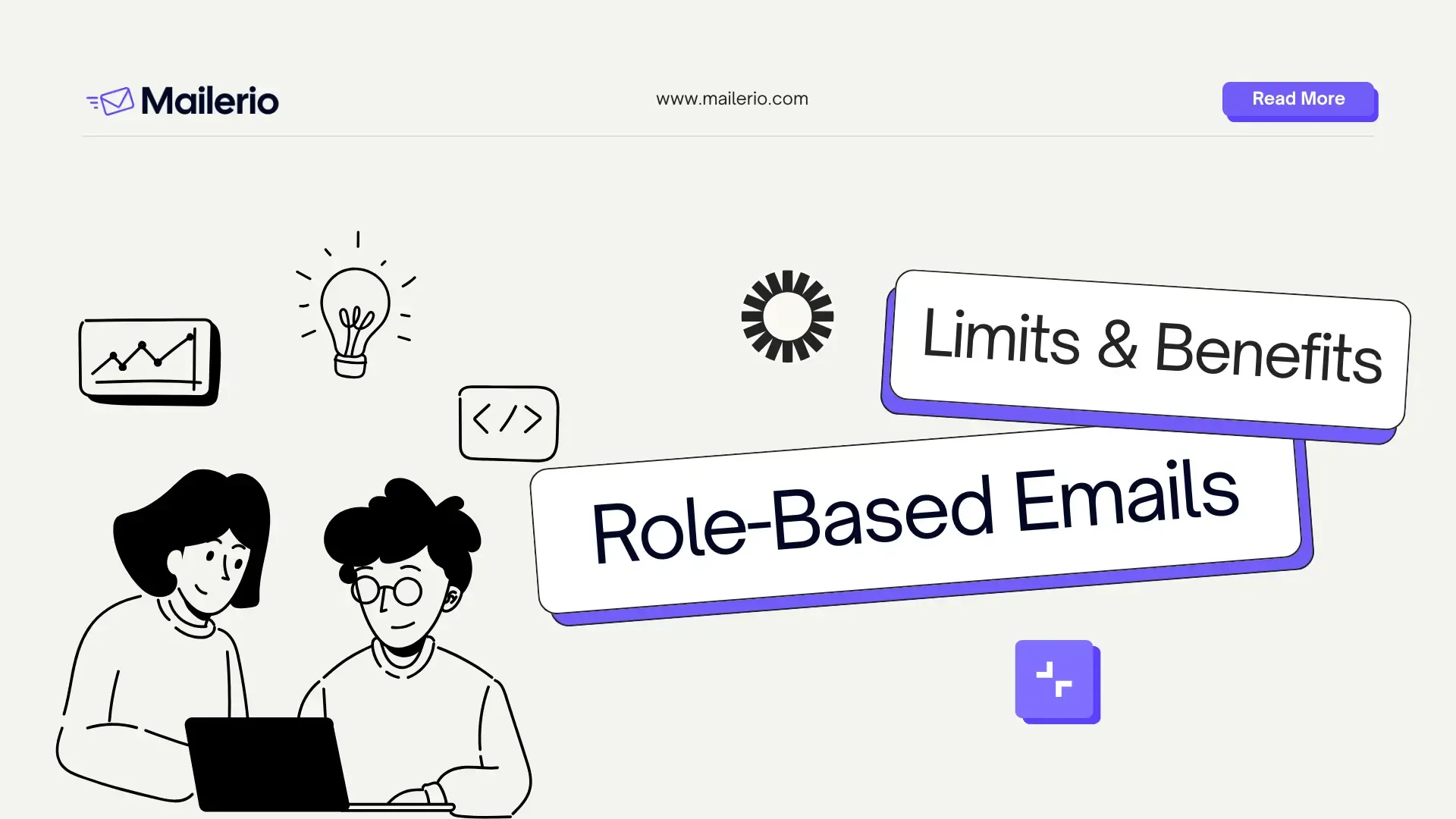
Communication is everything, and email remains the most reliable channel for keeping teams, customers, and partners connected. Among the many types of email addresses companies use, role-based email addresses play a unique and powerful role. These addresses, such as support@company.com or sales@brand.com, aren’t tied to a single person but to a specific function or department within an organization.
Role based email addresses make it easier for businesses to handle customer inquiries, streamline internal communication, and maintain continuity when staff changes occur. However, while they offer clear organizational benefits, they also come with distinct limitations, from deliverability challenges to potential losses in personalization and accountability.
This article explores both sides of the coin: the benefits and limits of role based email addresses. You’ll learn when to use them, how they impact communication and marketing performance, and the best practices to make sure these addresses work for your business, not against it.
TL;DR
Role-based email addresses, such as support@, sales@, or hr@, are tied to departments or functions rather than individuals. They streamline team communication, maintain continuity during staff changes, and serve as reliable public-facing or internal contact points. However, they come with limitations: they can reduce personalization, create accountability gaps, increase management complexity, and pose higher bounce or spam risk in marketing campaigns. To use them effectively, assign clear ownership, implement structured workflows, and avoid sending campaigns to these addresses without proper email verification. Tools like Mailerio can detect role-based, disposable, or invalid emails, helping businesses protect their sender reputation and maximize deliverability. When used strategically and validated, role-based addresses provide organizational efficiency while minimizing communication risks.
What Are Role-Based Email Addresses?
Role based email addresses are email accounts created to represent a specific function, team, or department within an organization, not a person. They usually take forms like support@company.com, sales@brand.com, info@business.com, or billing@organization.org.
Instead of belonging to a single employee, these addresses are managed collectively by a team or routed through an internal system so that messages reach whoever is best equipped to respond. This setup ensures that communication continues smoothly even when team members go on vacation, change roles, or leave the company altogether.
Here are the most popular role-based email addresses companies use (it’s not exclusive). If you’re looking for a more comprehensive way to detect role based emails, check the Mailerio email validation tool.
| Role-based email address | Typical function/use |
|---|---|
| info@ | General inquiries or initial public contact. |
| contact@ / contactus@ | Alternative for general contact or customer enquiries. |
| sales@ | Sales queries, leads, business development. |
| support@ | Customer support, help desk, technical assistance. |
| help@ / helpdesk@ | Similar to support@: broader “help” function. |
| billing@ / payments@ | Invoices, payments, financial admin. |
| hr@ / careers@ / jobs@ | Human resources, recruitment, job applications. |
| admin@ | Administrative or system-level contact. |
| webmaster@ | Website administration, tech problems of site. |
| postmaster@ | Formal email admin contact (often required by standards). |
| abuse@ | Reporting abuse, security incidents, unauthorised use. |
| security@ | Security team, vulnerability reports, IT security. |
| marketing@ | Marketing department, promotional materials, campaigns. |
| media@ / press@ | Media enquiries, press office, public relations. |
| operations@ / ops@ | Operational matters, logistic or internal coordination. |
| office@ | General office inbox, administrative contact point. |
| noc@ | Network Operations Center; tech infrastructure issues. |
Detect Role Based Email Addresses With Mailerio!
Keep Your Email Lists Relevant. Sign Up & Get 100 Free Credits
This structure makes role based email addresses particularly useful for organizations that rely on teamwork and continuity. They also help create a unified front. Customers see the brand communicating consistently, regardless of which team member replies.
However, while the concept seems simple, it’s important to understand that not all “shared” or “generic” inboxes are truly role-based. Some may act as aliases that forward messages to individual accounts, while others function as shared team inboxes where multiple users can access and respond within a centralized platform. Knowing the difference helps businesses choose the right setup for reliability, compliance, and deliverability. Learn more about other email types, like noreply email or catch-all emails.
Benefits of Role-Based Email Addresses
Using role based email addresses can offer organizations a wide range of advantages, from improving communication efficiency to ensuring business continuity. While often seen as simple administrative tools, these addresses can significantly strengthen internal workflows and customer experience when implemented correctly.
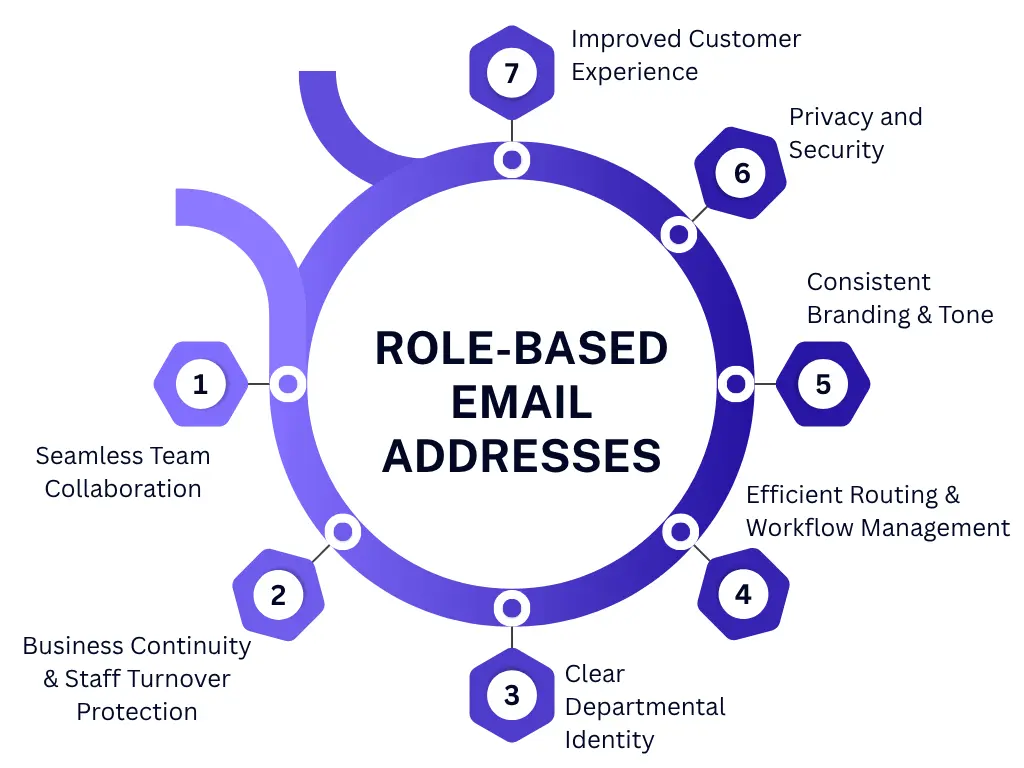

Here are the most important benefits:
1. Seamless Team Collaboration
Role based email addresses enable multiple team members to access and respond to messages from a single inbox. This shared visibility ensures that no inquiry slips through the cracks, even if one team member is out of office.
For example, support@company.com might be monitored by several agents, enabling faster responses and more consistent service.
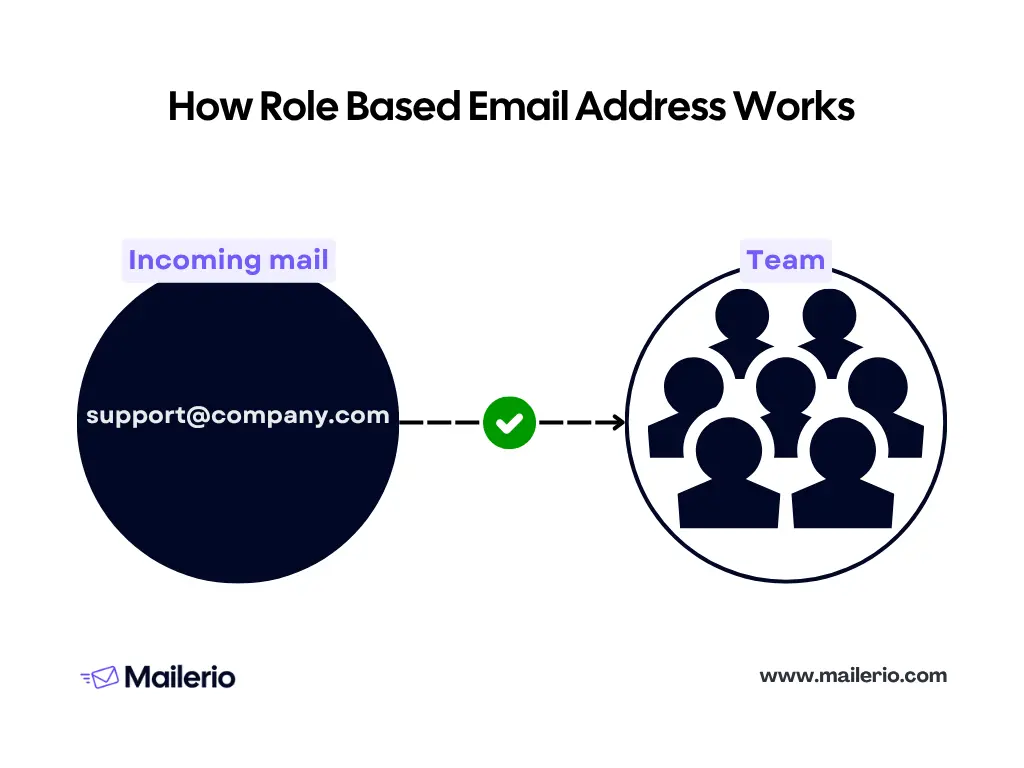

Key benefit: Efficient collaboration and guaranteed coverage across shifts or time zones.
2. Business Continuity and Staff Turnover Protection
Unlike personal emails, role based email addresses stay constant even when employees leave or roles change. This ensures clients and partners always have a stable, working contact, avoiding the communication gaps that often occur during staff transitions.
Key benefit: Continuous customer communication despite staff changes.
3. Clear Departmental Identity
Role-based addresses communicate structure and professionalism. They help customers instantly identify the right department for their needs, for example, billing@company.com for invoices or sales@company.com for inquiries. This clarity builds trust and reduces confusion, especially in larger organizations.
Key benefit: Reinforces brand organization and customer confidence.
4. Efficient Routing and Workflow Management
Role-based inboxes make it easier to categorize, assign, and prioritize messages. When integrated with tools like CRM systems or help desks, they can automatically route emails to the right team member or queue. This automation shortens response times and supports scalable customer service processes.
Key benefit: Streamlined communication and faster resolutions.
5. Consistent Branding and Tone
With shared templates and signatures, messages sent from a role-based account maintain a consistent brand voice. Whether a customer emails support@ or sales@, they receive responses aligned with your brand’s tone and quality standards.
Key benefit: Strengthens brand consistency and professionalism.
6. Privacy and Security
Role-based email addresses reduce the exposure of personal employee emails to the public. This protects staff from spam and phishing attempts while ensuring that sensitive information (like billing or HR inquiries) is handled through monitored, secure inboxes.
Key benefit: Enhanced privacy and reduced security risk for individual employees.
7. Improved Customer Experience
Customers appreciate quick, reliable responses, and role-based emails make this possible. They also prevent communication dead ends, since multiple team members can see and act on the same message thread. When managed well, this setup boosts satisfaction and trust.
Key benefit: Faster responses and more reliable customer communication.
Limits of Role-Based Email Addresses
While role-based emails offer structure and continuity, they also come with several significant drawbacks, especially in areas like personalization, email deliverability, and accountability. Understanding these limitations helps businesses avoid common pitfalls and design smarter communication systems that balance efficiency with authenticity.
1. Impersonal Communication
The biggest drawback of role based email addresses is the loss of human touch. Messages from support@company.com or info@brand.com can feel distant or robotic, especially when customers expect a personalized experience. Without a name or recognizable signature, emails may appear automated reducing open rates and engagement.
Impact: Lower response rates and weaker customer relationships.
2. Deliverability Challenges
Email service providers and spam filters often flag role based email addresses as higher risk especially in outbound campaigns. Platforms like Pipedrive and Mailchimp even restrict sending to certain addresses (admin@, sales@, info@) because these inboxes often serve multiple people and rarely provide valid opt-ins. If you want to make sure you’re not sending role-based emails, validate your lists before sending.
Impact: Increased bounce rates, potential spam filtering, and lower sender reputation.
3. Accountability and Ownership Gaps
When several people access the same inbox, it can become unclear who’s responsible for a particular message or follow-up. Without proper tracking systems, tasks may be duplicated, delayed, or missed entirely. This lack of personal accountability can lead to inefficiency and (sometimes) unhappy customers.
Impact: Slower response times and inconsistent customer service.
4. Overcrowded or Unmanaged Inboxes
Shared inboxes like info@ can quickly become cluttered with newsletters, spam, and general inquiries. If not actively filtered and managed, important messages risk being buried. Without automation or clear workflows, these inboxes often turn into digital “black holes.”
Impact: Lost messages, wasted time, and frustrated teams.
5. Limited Use for Marketing or Outreach
Because role-based email addresses aren’t tied to individuals, they’re usually unsuitable for direct marketing, lead nurturing, or cold outreach. That’s why, if you’re working with email marketing, remove role-based accounts from your list. Email automation tools may skip them entirely to comply with anti-spam regulations. Even when deliverable, role-based emails often lack engagement data (like open/click tracking by recipient).
Impact: Reduced marketing reach and unreliable analytics.
Detect Role Based Email Addresses With Mailerio!
Keep Your Email Lists Relevant. Sign Up & Get 100 Free Credits
6. Security and Compliance Risks
When multiple team members share login credentials for a role based inbox, security becomes a concern. Without proper access control, it’s difficult to track who opened, deleted, or forwarded sensitive messages. This lack of visibility can create compliance problems especially in regulated industries (finance, healthcare, legal).
Impact: Higher risk of unauthorized access and data mishandling.
7. Maintenance Complexity
The more role-based addresses an organization uses, the harder it becomes to maintain them. Each new department or project may request its own address, leading to confusion over ownership, forwarding rules, and access permissions. Without centralized oversight, email management becomes messy and error-prone.
Impact: Administrative overhead and risk of miscommunication.
Specific “Limits” to Emphasize
While these email addresses can improve communication within an organization, they carry several specific risks that businesses, especially marketers and SaaS companies, must carefully manage. Below are the most critical limits, with practical insights and solutions.
1. Deliverability & Spam Risk
Role-based email addresses are more likely to trigger spam filters or bounce back messages because they are often shared, generic, or rarely monitored. Cold email software platforms often flag role-based emails (support@, info@, sales@) as higher risk due to their lack of individual engagement history.
Impact:High bounce rates, lower inbox placement, and potential damage to your sender reputation.
Solution: Validate email lists before sending. Tools like Mailerio detect role-based accounts in advance, allowing marketers to remove or treat them differently to maintain deliverability and campaign effectiveness.
Protect Your Sender Reputation With Mailerio!
Sign Up & Get 100 Credits Upon Registration
2. Marketing & Cold-Email Issues
Many role addresses are not tied to real, opted-in recipients, which increases the likelihood of regulatory or deliverability problems. Pipedrive specifically blocks sending to certain role-based addresses to avoid spam complaints or compliance issues.
Impact: Sending campaigns to these addresses can harm your email domain reputation, reduce engagement rates, and even risk violations of anti-spam regulations.
Solution: Use Mailerio to filter out role-based accounts from marketing lists before launching campaigns. This ensures your outreach targets real subscribers and decision-makers, protecting your sender reputation.
3. Ownership, Visibility & Continuity
Shared role inboxes can create ambiguity in accountability:
- Who responded to a message?
- Who follows up on outstanding inquiries?
- What happens when a staff member leaves?
Without clear ownership, conversations can be lost, duplicated, or delayed, impacting service quality and internal workflows.
Solution: Assign clear responsibility and monitor usage of role-based addresses. When combined with email validation (Mailerio can flag potentially inactive or role-based accounts), you can maintain accurate records and continuity.
When Role-Based Email Addresses Make Sense
Not all email addresses are created equal. Understanding when to use role-based email addresses can save your team time, improve customer experiences, and protect your email reputation. While these addresses offer numerous operational benefits, their use must be strategic.


When Role-Based Emails Are Appropriate
1.Departmental Contact: role-based addresses work well for functional areas within a company, such as:
- HR@company.com for human resources inquiries
- Billing@company.com for invoices and payment questions
- Legal@company.com for compliance or legal correspondence
- Support@company.com for customer service requests
These addresses ensure inquiries are automatically routed to the right team and provide continuity even if individual staff members change roles.
2. Entry Point for New Customers or Inquiries: When the role is more important than the individual, role-based addresses serve as an ideal entry point.
For example, a sales@ or info@ inbox can act as the first point of contact for prospects or new customers, ensuring messages reach the correct department immediately.
3. Public-Facing Contact Published on Websites or Marketing Materials: role-based email addresses are ideal for general contact points that appear in public directories, websites, or brochures.
Using a consistent, departmental address like support@ or contact@ helps maintain brand professionalism and prevents personal employee emails from being exposed to spam or phishing attempts.
4. Internal Teams / Collaboration: shared role-based inboxes support internal teamwork by allowing multiple team members to monitor and respond to messages.
For example, a helpdesk@ inbox in IT or operations can be accessed by several employees, ensuring prompt response and reducing bottlenecks.
Learn more about other email types like catch-all, invalid emails, or abuse emails.
When Role-Based Emails Are Less Appropriate
1. Personalized Outreach, Account Management, and Relationship Building: role-based addresses are impersonal and can hinder relationship-building efforts.
For high-value clients, account managers, or recurring customers, a named email address (jane.doe@company.com) helps maintain trust, personalize communication, and encourage engagement.
2. High-Stakes Transactions Where Trust is Vital: in situations like legal correspondence, financial negotiations, or sensitive client communications, role-based emails may appear generic or untrustworthy. Direct, personalized emails help reinforce credibility and confidence.
3. Marketing Campaigns to Cold Lists: sending bulk emails to role-based addresses is risky. These addresses often do not represent real opt-in users and may be blocked by platforms or spam filters.
Mailerio and similar email validation tools are essential here. By pre-validating your list, you can identify role-based accounts and avoid sending campaigns to them, protecting your sender reputation and improving overall deliverability.
Detect Role Based Email Addresses With Mailerio!
Keep Your Email Lists Relevant. Sign Up & Get 100 Free Credits
Role-Based vs Generic Emails Differences
When discussing role email accounts, terminology can get confusing. Many sources differentiate between generic and role-based email addresses, but the definitions often overlap, creating uncertainty for marketers, business owners, and IT teams.
Generic Email Addresses
Generic addresses are broad, non-personal email accounts typically used for public-facing or general inquiries. Common examples include:
- info@company.com
- contact@company.com
- office@company.com
Generic addresses are often the first point of contact for external communications, but may not map to a specific function or team. Because these inboxes are typically monitored by multiple people or forwarded internally, they can present deliverability risks, especially when used in outbound marketing or cold email campaigns.
Key point: Generic addresses are easy to find and widely published, but their lack of individual engagement can trigger spam filters, increasing bounce rates.
Role-Based Email Addresses
Role-based email addresses refer specifically to accounts tied to a department, function, or team within an organization, such as:
- support@company.com (Customer Support)
- billing@company.com (Finance/Billing)
- hr@company.com (Human Resources)
Unlike purely generic addresses, role-based emails indicate a specific functional responsibility, even if multiple people share the inbox. These addresses are designed to streamline communication workflows, improve internal collaboration, and provide continuity when staff changes occur.
Overlapping and Confusing Terminology
In practice, many sources use “generic” and “role-based” interchangeably, because:
- Both types are non-personal.
- Both may be monitored by multiple people.
- Both are frequently published publicly or used for inbound inquiries.
For clarity in this article, we define:
Role-based email addresses = departmental/function-based accounts, inclusive of generic/team inboxes.
This approach helps businesses focus on the functional purpose of the address rather than getting lost in semantics.
Deliverability & Usage Differences
Here are some important differences between generic and role-based addresses when it comes to email campaigns:
| Type | Deliverability Considerations | Usage Recommendations |
|---|---|---|
| Generic (info@, contact@) | Higher likelihood of spam filtering or bounce; low engagement tracking | Use for inbound inquiries or public contact points; avoid bulk outbound campaigns |
| Role-Based (support@, billing@) | Slightly better if tied to a monitored function, but still higher risk in marketing campaigns | Ideal for departmental routing, internal collaboration, and continuity; validate before sending emails |
Wrap Up
Role based email addresses offer clear organizational advantages, from streamlining team workflows to maintaining continuity when staff changes occur. They provide departments like support, sales, HR, and billing with a stable, shared communication channel that ensures inquiries are routed and responded to efficiently.
However, as we’ve explored, these addresses come with important limitations:
- Deliverability & Spam Risk: Role-based addresses are more likely to bounce or trigger spam filters, particularly in marketing campaigns.
- Personalization & Customer Relationships: Generic inboxes can feel impersonal, reducing engagement and trust.
- Ownership & Accountability: Shared access can create ambiguity over who responds to which messages.
- Scalability & Complexity: As the number of role-based accounts grows, managing them effectively becomes challenging.
When used thoughtfully, role based email addresses enhance organizational efficiency and customer service. By combining careful usage, workflow management, and email validation tools like Mailerio, businesses can maximize the benefits while minimizing risks to deliverability, reputation, and customer experience.
FAQ
Not always. Many role-based or generic addresses (like info@ or sales@) may not belong to a single recipient, increasing bounce and spam risk. Using an email validation tool like Mailerio helps identify these addresses before sending campaigns, protecting your sender reputation.
Monitoring depends on internal workflows. Some role-based addresses are actively managed by a team, while others may be infrequently checked. Audit your inboxes and set clear ownership to ensure timely responses.
Yes. Role-based addresses work well with ticketing systems, CRM routing, and internal collaboration tools. They help ensure messages are assigned and tracked even when team members change.
They can. Customers may perceive messages from generic inboxes as impersonal. A hybrid approach pairing role-based addresses with a named contact in the signature helps maintain a personal touch while keeping the benefits of shared inboxes.
Always validate your email lists before campaigns. Mailerio can detect role-based, disposable, or invalid addresses, so you can clean your list and focus on real, engaged recipients. This prevents bounces and spam complaints.
Yes. Industries that rely heavily on marketing campaigns, cold outreach, or compliance-sensitive communications (like SaaS, finance, or legal) should treat role-based addresses cautiously. Validation and monitoring are essential to avoid deliverability issues.
Yes, just make sure to assign responsibility for tracking conversations, use shared inbox tools or labels for organization, and combine with validation tools like Mailerio to ensure messages reach valid recipients.



